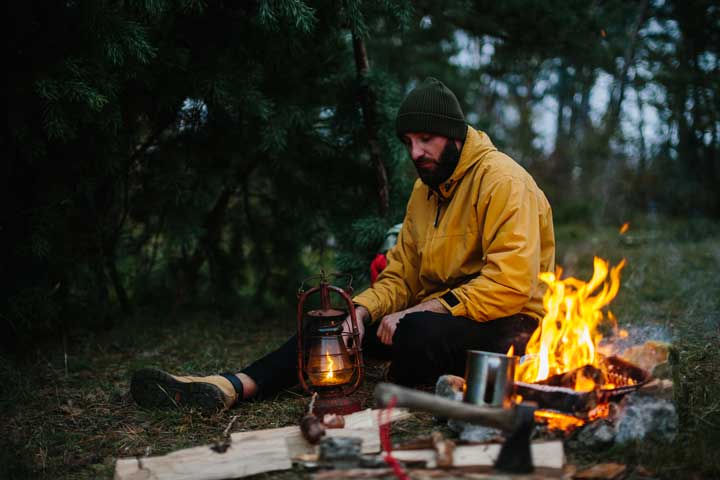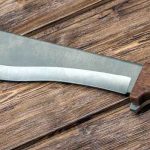You may think survival and bushcraft are the same thing. While these two disciplines share some common elements, a few key differences distinguish one from the other. So, what is the difference between bushcraft and survival?
The full answer requires some nuance, but at a basic level, bushcraft involves learning skills to thrive in nature, while survival is about sustaining yourself long enough to return to civilization.
Understanding the distinction between these two skill sets can take some practice and experience. Since being aware of your surroundings and skills is essential to survival in nature and applying bushcraft appropriately, it is vital to have at least a basic understanding of these experiences.
In this article, I will delve into the similarities and differences between bushcraft and survival skills. Read on to learn about these closely related skill sets and see if these are skills you want to gain.
How would you describe bushcraft?
Bushcraft is a set of skills that allow you to fulfill your needs in nature by using the world around you. Those interested in this set of skills will practice finding food and water, building shelter, making a fire, and navigating the natural world.
When practicing bushcraft you will not need to engage in all those necessities at once. Instead, you may practice one at a time if you prefer.

What are the similarities between bushcraft and survival?
At first glance, there are several similarities between bushcraft and survival. Some similarities include the skills you develop and your focus as you engage in those skills.
Focus
Bushcraft and survival both focus on developing skills that provide you with elements of survival. Whether you are fighting to survive in the woods or purposefully developing your bushcraft skills, you will need to focus on food, shelter, water, and fire.
Skills
The actual skills you learn in bushcraft and survival are similar. With bushcraft, you can practice some finesse and be a little pickier when it comes to the particular skills you use. With survival, getting through is the priority. So, skills necessary when survival is on the line may be inelegant compared to bushcraft skills.
However, when you learn bushcraft skills, you can apply them to a survival situation. Common survival and bushcraft skills include tracking, foraging, fishing, fire-making, shelter-building, water-sourcing, navigation, tool-making, and trapping. Depending on your environment, you may find certain skills more useful than others.
What are the differences between bushcraft and survival?
While bushcraft and survival are similar, there are key differences to understand when you are new to these skills. These differences include the circumstances that lead to the need for the skills and your mindset as you perform the skills.
Circumstances
While the basic skills for both are similar, the biggest difference between bushcraft and survival is the circumstances you apply those skills in. Both skillsets come into play in nature.
Circumstances for bushcraft are usually planned (as much as you can plan in the wild), while circumstances requiring survival skills are often emergencies. For example, you may need survival skills if you are caught in the woods or a boat crash. Knowing how to address injuries is essential in these situations.
Mindset
Everyone’s a little different in their mindset in the great outdoors. Some are calm, others energized, and others panicked. If you elect to learn bushcraft, you will likely feel comfortable since this is an intentional choice.
If you need to employ survival skills in an emergency, you may be a little more panicked. If you are comfortable with your skills outdoors, some of that panic can subside.

What is the difference between a bushcraft and survival knife?
Knives are an essential tool for survival in nature. They allow you to harvest, dig, chop, skin, and protect. Choosing the right knife makes a big difference when eating, sleeping, and traveling throughout nature.
Bushcraft knives tend to be smaller and more delicate than survival knives. These knives are ideal for finer work, such as skinning, carving, and cutting limbs. On the other hand, survival knives are larger and used for tasks involving gross motor skills. Both of these knife types should be sturdy and well-constructed.
Frequently asked questions
Why is it called bushcraft?
The name “bushcraft” was originally used by the Dutch during the colonization of South Africa. Bushcraft is also used to refer to survival in the Australian bush. Over time the term was used broadly to refer to overall outdoor navigation skills.
The exact skills within this craft vary greatly depending on the geographic location in which they are used. Bushcraft can occur in many environments, from the rainforest to the desert to the swamp. There are several books, websites, and television shows dedicated to bushcraft.
What is the point of bushcraft?
The point of bushcraft is to learn the skills needed to use the natural world to provide food, shelter, water, and fire. Learning these skills can provide you with a hobby or the skills necessary to survive in an emergency. Bushcraft provides an opportunity to get closer to nature and develop creative problem-solving skills.
What tools do I need for bushcraft?
Aside from your trusty bushcraft knives, there are a few other tools you will need. Those exact tools will depend on your particular circumstances. An ax and multi-tool can make a big difference. Some bushcrafters prefer to stick to as few tools as possible. Others bring tools such as twine, a compass, gloves, and a lantern.
Final thoughts
While everyone hopes they never get into an emergency in the wild, it is vital to develop some survival skills just in case. If you start with some bushcraft skills, you can eventually apply those to a survival situation.
Learning bushcraft is a great way to be prepared and enjoy a creative and useful hobby. There are many elements of bushcraft, including foraging, fire-making, trapping, shelter-building, and tool-making. Learn some basic survival and bushcraft skills by reading this website and looking at other resources.




